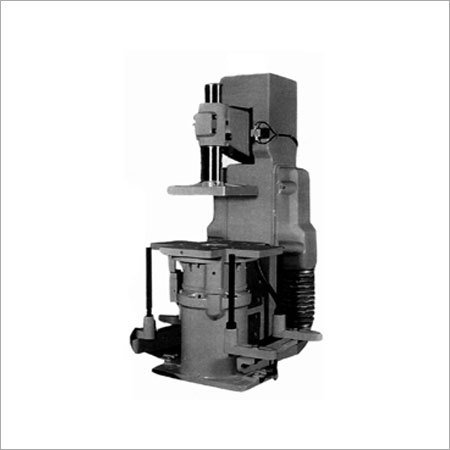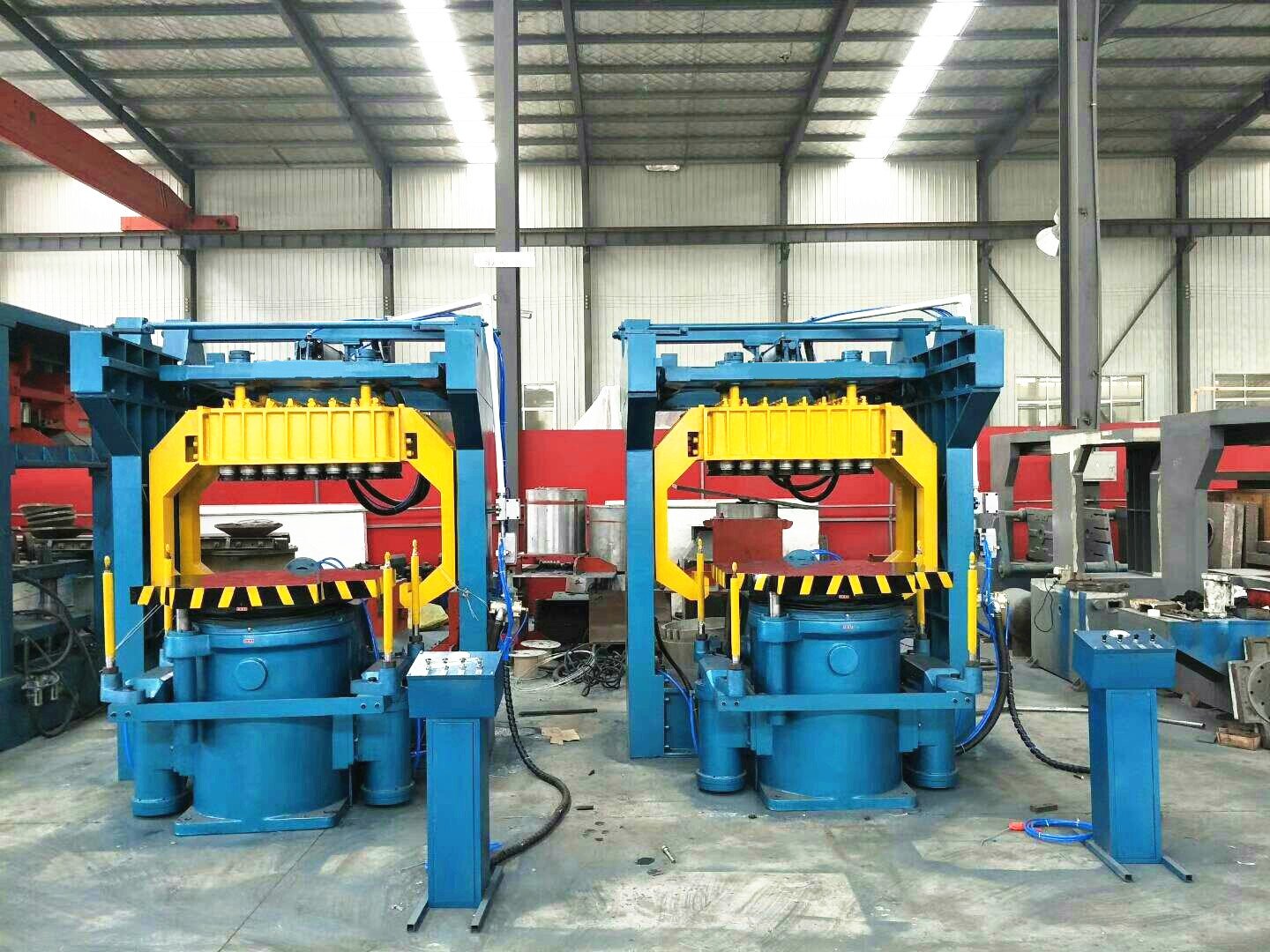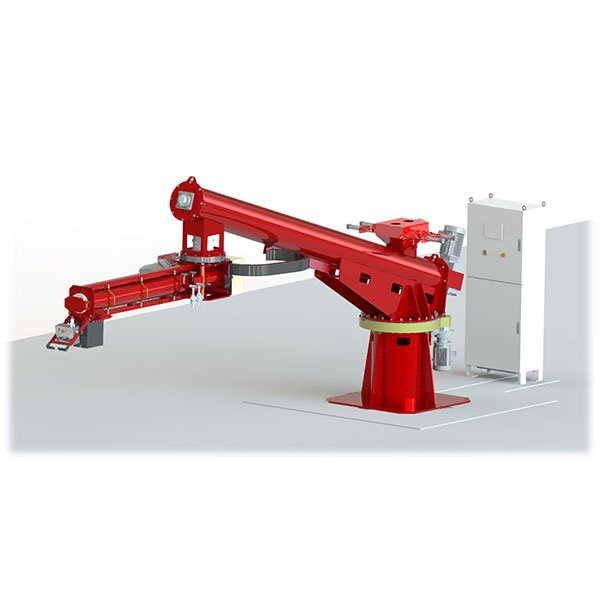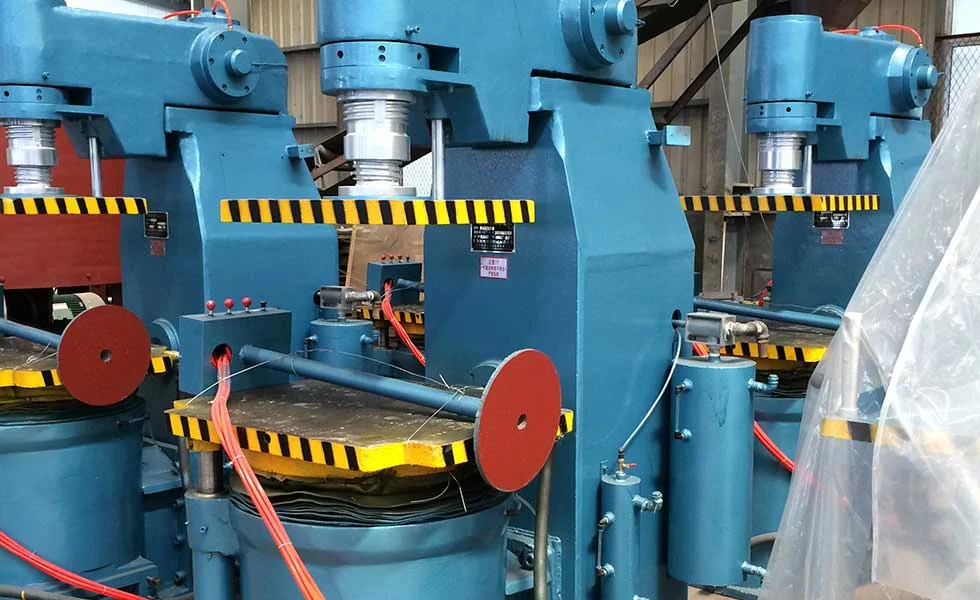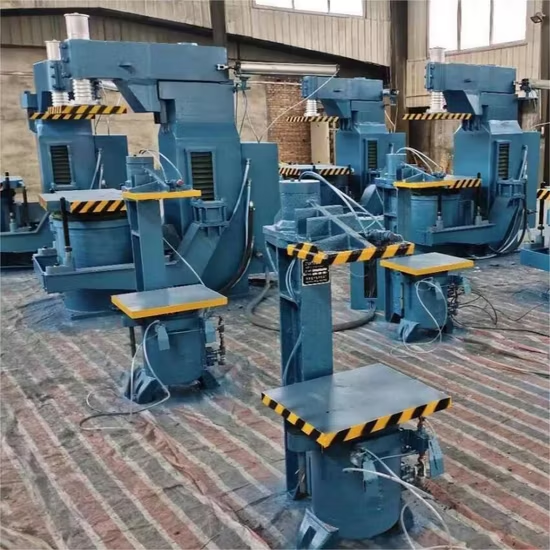
Struggling to choose between shot blasting and grit blasting? Your surface preparation process—and its results—depend heavily on this decision.
Shot blasting and grit blasting are both powerful methods for cleaning, profiling, and preparing surfaces, but they differ greatly in technique, application, and results.
If you're wondering which method suits your industrial process better—this comparison breaks it all down clearly. From abrasive media to environmental impact, we’ll cover it all.
What Is Shot Blasting?
Shot blasting sounds intense—and it is. But that’s exactly why industries rely on it for the toughest surface preparation challenges.
Shot blasting involves propelling spherical metal abrasives at high speed using a centrifugal wheel, creating a uniform finish while enhancing surface strength.
Shot blasting is a mechanical process that utilizes a rotating blast wheel to shoot metallic media (typically steel shots or steel grit) at a surface enclosed within a chamber. Unlike grit blasting, which relies on air pressure, shot blasting uses kinetic energy from a spinning wheel to accelerate abrasives. The result is a smoother, more consistent surface finish, ideal for heavy-duty applications.
I’ve seen this method work wonders in shipbuilding yards and automotive plants. Shot blasting prepares steel plates, pipes, and castings not only by cleaning rust and paint but also by inducing beneficial compressive stresses—a process known as shot peening. These stresses enhance fatigue resistance, making shot blasting a dual-purpose treatment: surface cleaning and surface strengthening.
Common Shot Blasting Media
| Media Type | Shape | Typical Use |
|---|---|---|
| Steel Shot | Spherical | Smoothing and polishing metal parts |
| Steel Grit | Angular | Aggressive cleaning of tough surfaces |
Common Equipment
- Centrifugal Wheel Blast Machines
- Enclosed Shot Blasting Systems
- Pass-through Systems for Continuous Production
Shot blasting works exceptionally well with steel, iron, and other hard metals, and it’s best suited for high-volume, automated production lines.
What Is Grit Blasting?
Ever needed precision cleaning for a delicate surface? That’s where grit blasting comes into play.
Grit blasting uses angular abrasive particles propelled by compressed air to clean, texture, or etch surfaces—perfect for delicate or irregular materials.
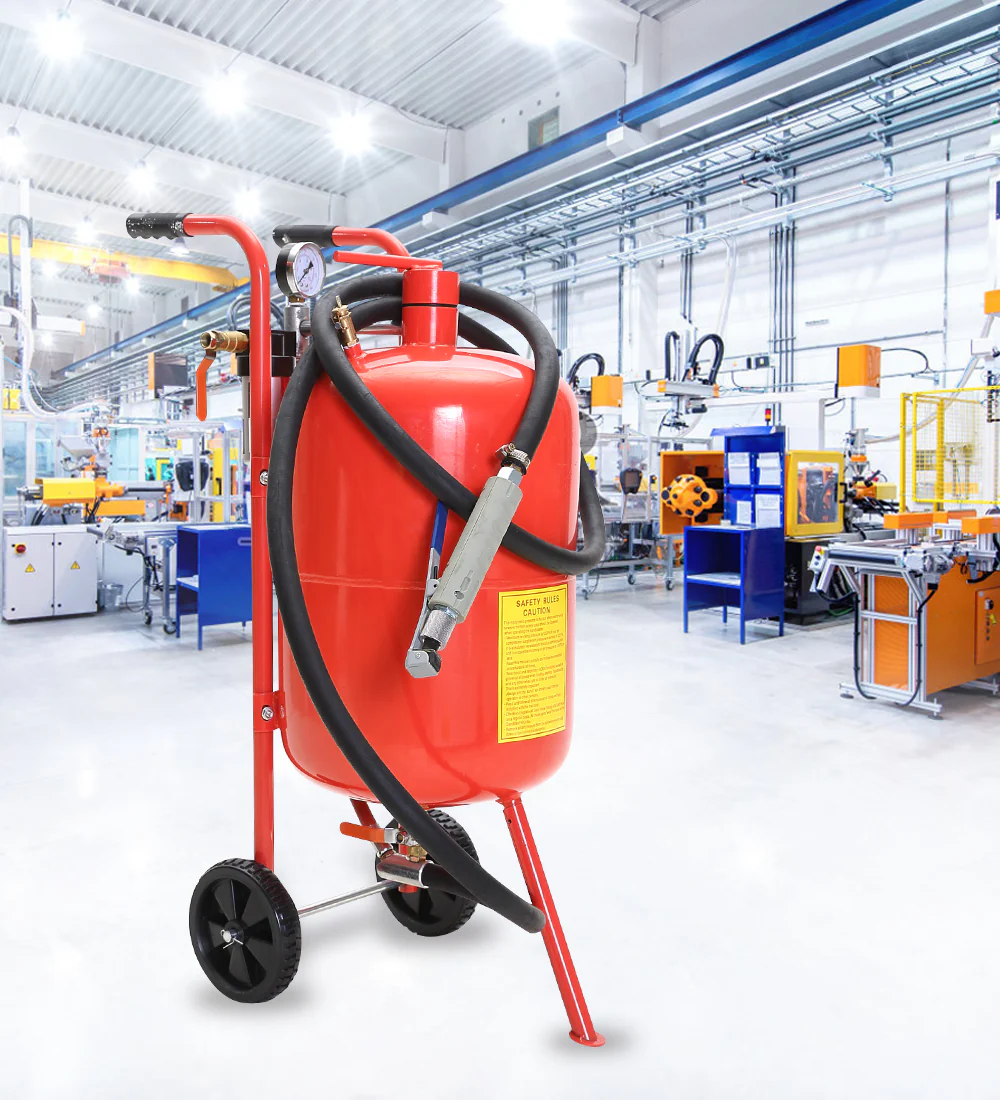
Unlike the wheel-driven shot blasting process, grit blasting relies on compressed air to propel abrasive media at the surface. The media is usually angular—think aluminum oxide, garnet, or even glass beads. This makes it ideal for creating a rough surface texture, perfect for paint and coating adhesion.
One thing I’ve learned is that grit blasting is incredibly flexible. Whether you’re prepping architectural steel, restoring concrete facades, or even cleaning antique stone carvings, grit blasting offers that manual control to reach every edge and crevice.
Grit Blasting Media Types
| Media Type | Shape | Best For |
|---|---|---|
| Aluminum Oxide | Angular | Etching and removing tough coatings |
| Garnet | Angular | Environmentally friendly cleaning |
| Glass Beads | Spherical | Gentle cleaning and polishing |
Common Equipment
- Portable Sandblasters
- Air-powered Blasting Cabinets
- Open-air or Confined Space Systems
Grit blasting is used across metal, concrete, stone, and glass surfaces, particularly where detail work or adhesion is key.
Key Differences Between Shot Blasting and Grit Blasting
4.1. Abrasive Material & Shape
Shot blasting uses spherical steel shots, while grit blasting employs angular media like aluminum oxide or garnet.
| Feature | Shot Blasting | Grit Blasting |
|---|---|---|
| Shape | Spherical | Angular |
| Reusability | High | Medium to Low |
| Aggressiveness | Moderate | High (due to sharp edges) |
Spherical abrasives in shot blasting offer a consistent impact pattern and smooth finish, while the angular grit in grit blasting is more aggressive, ideal for removing coatings and profiling.
4.2. Surface Finish
Shot blasting yields a polished surface, while grit blasting leaves a textured finish for better coating adhesion.
For example, I’ve used shot blasting to prep steel panels before welding, where a clean, smooth surface is key. But for powder coating or painting, grit blasting provides the better base.
4.3. Speed and Efficiency
Shot blasting is better for high-speed, large-scale production lines. Grit blasting is slower but offers more precision.
| Method | Speed | Best Use Case |
|---|---|---|
| Shot Blasting | Fast | Mass production, uniform parts |
| Grit Blasting | Slower | Intricate or varied geometries |
4.4. Surface Preparation Goals
Shot blasting is ideal for rust and paint removal; grit blasting excels in profiling for coatings.
I’ve found grit blasting indispensable for coating prep on concrete floors and exterior metal frameworks. Meanwhile, shot blasting is unmatched for prepping heavy-duty steel structures.
4.5. Material Compatibility
Shot blasting handles tough metals; grit blasting adapts to more material types.
| Material Type | Shot Blasting | Grit Blasting |
|---|---|---|
| Steel & Iron | ✔️ | ✔️ |
| Concrete/Stone | ❌ | ✔️ |
| Glass | ❌ | ✔️ |
4.6. Cost and Reusability
Shot blasting is more cost-effective over time due to media recyclability.
Grit blasting has lower upfront costs but higher long-term consumable expenses and labor demands.
Comparison Table: Shot Blasting vs Grit Blasting

| Feature | Shot Blasting | Grit Blasting |
|---|---|---|
| Abrasive Shape | Spherical | Angular |
| Media Reusability | High | Medium to Low |
| Surface Texture | Smooth/Polished | Rough/Textured |
| Speed & Automation | Fast, Automated | Slower, Manual |
| Best for | Heavy-duty metals, steel parts | Versatile materials, detail work |
| Equipment Type | Enclosed, wheel-driven | Portable, air-powered |
| Environmental Impact | Low dust, recyclable media | High dust, media loss |
| Initial Cost | High | Low |
| Long-term Cost | Lower (due to efficiency) | Higher (due to media/labor) |
| Typical Industries | Automotive, Shipbuilding | Aerospace, Restoration, Construction |
Which Method Should You Choose?
The best method depends on your material, goals, budget, and setup.
Choose shot blasting for tough metal surfaces and efficient mass production. Choose grit blasting for detailed work, delicate surfaces, and better coating adhesion.
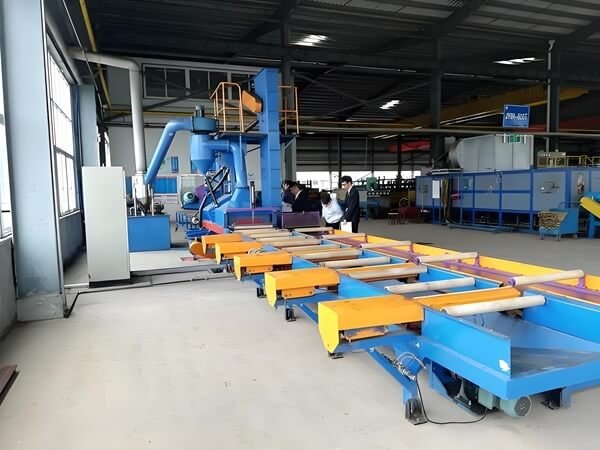
Decision-Making Guide
| Situation | Recommended Method |
|---|---|
| Prepping steel beams for welding | Shot Blasting |
| Etching a design into glass or stone | Grit Blasting |
| Cleaning automotive parts in bulk | Shot Blasting |
| Painting prep on architectural panels | Grit Blasting |
| Working with a tight budget | Grit Blasting |
Common Applications of Each Method
Shot Blasting
- Automotive: Gearbox casings, engine blocks
- Shipbuilding: Steel plate cleaning, weld seam prep
- Heavy Machinery: Frame prep, fatigue strengthening
Grit Blasting
- Aerospace: Aircraft skin cleaning, fastener area prep
- Architecture: Steel facade coating prep, decorative etching
- Construction: Concrete surface profiling, paint removal
Safety & Environmental Considerations
Shot blasting is generally safer and cleaner, while grit blasting demands more dust control and PPE.
| Factor | Shot Blasting | Grit Blasting |
|---|---|---|
| PPE Requirements | Medium (hearing, eye) | High (full gear) |
| Noise Levels | High | High |
| Dust Generation | Low (enclosed) | High (open/portable) |
| Environmental Impact | Lower | Higher |
Dust extraction and filtration systems are a must for grit blasting. Always train your operators on proper PPE usage to ensure health and safety.
FAQs
Is shot blasting better than grit blasting?
Not always. Shot blasting is better for uniform surfaces and fatigue strength, while grit blasting excels in coating prep and material versatility.
Does grit blasting damage softer materials?
Yes, it can. Grit blasting can be too aggressive on soft metals or delicate surfaces unless you use fine media and lower pressure.
Can shot blasting be automated?
Absolutely. Shot blasting systems are often fully automated for production lines, improving throughput and consistency.
How often do I need to replace abrasive media?
Shot media can be reused hundreds of times; grit typically needs frequent replacement after just a few uses.
What is the cost difference over time?
Shot blasting has a higher upfront cost but becomes more economical long-term due to lower media loss and higher efficiency.
Conclusion
Shot blasting and grit blasting each have unique strengths and limitations. The right choice depends on your material, finish requirements, and operational scale.
Need help choosing or customizing your blasting solution? Contact Hitech China to master your surface preparation process.
Call-To-Action (CTA)
Still unsure which blasting method fits your needs?
Get expert guidance and tailor-made shot blasting solutions from Hitech China—contact us today to optimize your process.


